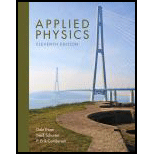
Applied Physics (11th Edition)
11th Edition
ISBN: 9780134159386
Author: Dale Ewen, Neill Schurter, Erik Gundersen
Publisher: PEARSON
expand_more
expand_more
format_list_bulleted
Textbook Question
Chapter B.2, Problem 21P
Change 65.3 m/s2 to km/h2.
Expert Solution & Answer
Want to see the full answer?
Check out a sample textbook solution
Students have asked these similar questions
25.4 mi – 4
hr
hr
Q/ Convert 152 mi/h to m/s.
Convert 1500km/hr. to m/s
Chapter B Solutions
Applied Physics (11th Edition)
Ch. B.2 - Change 20.0 km to m.Ch. B.2 - Change 2460 m to km.Ch. B.2 - Change 38.0 min to s.Ch. B.2 - Prob. 4PCh. B.2 - Prob. 5PCh. B.2 - Change 3.00 h to s.Ch. B.2 - Change 88.0 ft/s to mi/h.Ch. B.2 - Change 30.0 mi/h to ft/s.Ch. B.2 - Change 80.0 m/s to km/h.Ch. B.2 - Change 2.00 km/h to m/s.
Ch. B.2 - Prob. 11PCh. B.2 - Prob. 12PCh. B.2 - Change 54.0 ft3 to yd3.Ch. B.2 - Change 10.0 yd3 to ft3.Ch. B.2 - Change 0.0300 km to cm.Ch. B.2 - Change 5000 cm to km.Ch. B.2 - Change 3.00 km/h to m/s.Ch. B.2 - Change 75.0 m/s to km/h.Ch. B.2 - Prob. 19PCh. B.2 - Prob. 20PCh. B.2 - Change 65.3 m/s2 to km/h2.Ch. B.2 - Change 45.3 km/h2 to m/s2.Ch. B.2 - Change 24.2 m/s2 to ft/s2.
Additional Science Textbook Solutions
Find more solutions based on key concepts
Formulate a rule for predicting how the current through (he battery would change (i.e., whether it would increa...
Tutorials in Introductory Physics
Sparks will occur between the plates of an ail-filled capacitor at a lower voltage when the air is humid than w...
University Physics Volume 2
The reason of the evaporation of the entire drop rather than the just a small fraction of drop in a matter of m...
Physics (5th Edition)
3. What is free-fall, and why does it make you weightless? Briefly describe why astronauts are weightless in th...
The Cosmic Perspective (8th Edition)
The pV-diagram of the Carnot cycle.
Sears And Zemansky's University Physics With Modern Physics
What gas molecules are primarily responsible for the absorption of each of the following types of light in our ...
Lecture- Tutorials for Introductory Astronomy
Knowledge Booster
Learn more about
Need a deep-dive on the concept behind this application? Look no further. Learn more about this topic, physics and related others by exploring similar questions and additional content below.Similar questions
- on- as. he 41. Lisa rushes down onto a subway platform to find her train already departing. She stops and watches the cars go by. Each car is 8.60 m long. The first moves past her in A est ect s it he ith s it 1.50 s and the second in 1.10 s. Figure P2.40 Find the constant acceleration of the train. CHALLENGE PROBLEMSarrow_forwardPlease solve this problem. Final answer : (A) 2.19 m/s (B) 1.33 marrow_forward3. 1 slug is equivalent to 1 lb.s^2/ft O a. True O b. Falsearrow_forward
- Use 10m/sarrow_forwardTwo liquids of different densities (Density of Liquid 1 = 1457 kg per meter cubed, Density of Liquid 2 = 476.9 kg per meter cubed are poured together into a 120 Liter tank, filling it. The resulting density of the mixture is 820 kilogram per meter cubed. Assume local g = 9.68 meter per second squared. Determine a. The mass of mixture in kilograms. b. The Weight of mixture in kilogram force.arrow_forwardConvert 41.4 m/s to units of km/hour.arrow_forward
arrow_back_ios
SEE MORE QUESTIONS
arrow_forward_ios
Recommended textbooks for you
 College PhysicsPhysicsISBN:9781305952300Author:Raymond A. Serway, Chris VuillePublisher:Cengage Learning
College PhysicsPhysicsISBN:9781305952300Author:Raymond A. Serway, Chris VuillePublisher:Cengage Learning University Physics (14th Edition)PhysicsISBN:9780133969290Author:Hugh D. Young, Roger A. FreedmanPublisher:PEARSON
University Physics (14th Edition)PhysicsISBN:9780133969290Author:Hugh D. Young, Roger A. FreedmanPublisher:PEARSON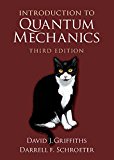 Introduction To Quantum MechanicsPhysicsISBN:9781107189638Author:Griffiths, David J., Schroeter, Darrell F.Publisher:Cambridge University Press
Introduction To Quantum MechanicsPhysicsISBN:9781107189638Author:Griffiths, David J., Schroeter, Darrell F.Publisher:Cambridge University Press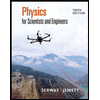 Physics for Scientists and EngineersPhysicsISBN:9781337553278Author:Raymond A. Serway, John W. JewettPublisher:Cengage Learning
Physics for Scientists and EngineersPhysicsISBN:9781337553278Author:Raymond A. Serway, John W. JewettPublisher:Cengage Learning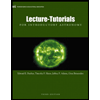 Lecture- Tutorials for Introductory AstronomyPhysicsISBN:9780321820464Author:Edward E. Prather, Tim P. Slater, Jeff P. Adams, Gina BrissendenPublisher:Addison-Wesley
Lecture- Tutorials for Introductory AstronomyPhysicsISBN:9780321820464Author:Edward E. Prather, Tim P. Slater, Jeff P. Adams, Gina BrissendenPublisher:Addison-Wesley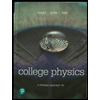 College Physics: A Strategic Approach (4th Editio...PhysicsISBN:9780134609034Author:Randall D. Knight (Professor Emeritus), Brian Jones, Stuart FieldPublisher:PEARSON
College Physics: A Strategic Approach (4th Editio...PhysicsISBN:9780134609034Author:Randall D. Knight (Professor Emeritus), Brian Jones, Stuart FieldPublisher:PEARSON

College Physics
Physics
ISBN:9781305952300
Author:Raymond A. Serway, Chris Vuille
Publisher:Cengage Learning

University Physics (14th Edition)
Physics
ISBN:9780133969290
Author:Hugh D. Young, Roger A. Freedman
Publisher:PEARSON

Introduction To Quantum Mechanics
Physics
ISBN:9781107189638
Author:Griffiths, David J., Schroeter, Darrell F.
Publisher:Cambridge University Press

Physics for Scientists and Engineers
Physics
ISBN:9781337553278
Author:Raymond A. Serway, John W. Jewett
Publisher:Cengage Learning

Lecture- Tutorials for Introductory Astronomy
Physics
ISBN:9780321820464
Author:Edward E. Prather, Tim P. Slater, Jeff P. Adams, Gina Brissenden
Publisher:Addison-Wesley

College Physics: A Strategic Approach (4th Editio...
Physics
ISBN:9780134609034
Author:Randall D. Knight (Professor Emeritus), Brian Jones, Stuart Field
Publisher:PEARSON
Components of a Vector (Part 1) | Unit Vectors | Don't Memorise; Author: Don't Memorise;https://www.youtube.com/watch?v=fwMUELxZ0Pw;License: Standard YouTube License, CC-BY
02 - Learn Unit Conversions, Metric System & Scientific Notation in Chemistry & Physics; Author: Math and Science;https://www.youtube.com/watch?v=W_SMypXo7tc;License: Standard Youtube License